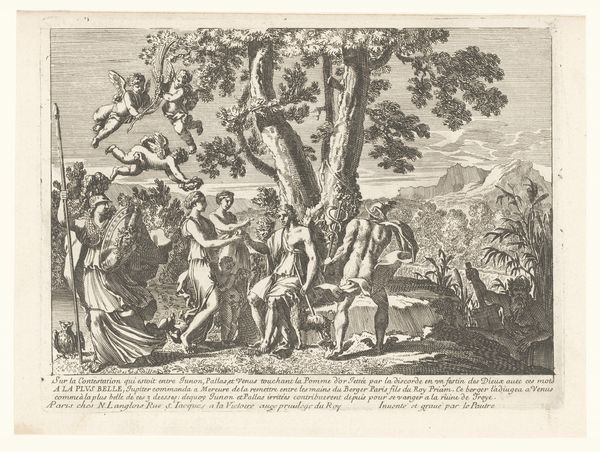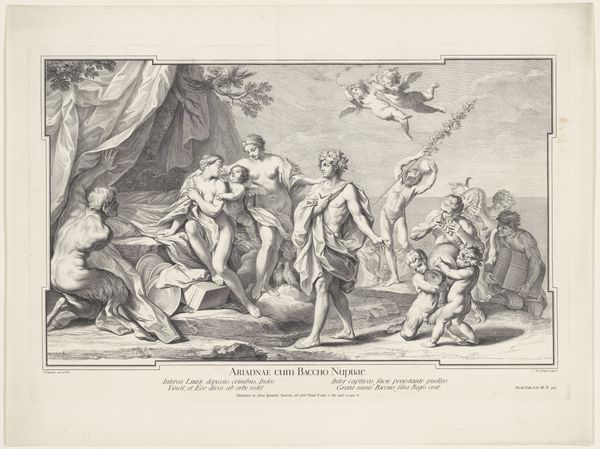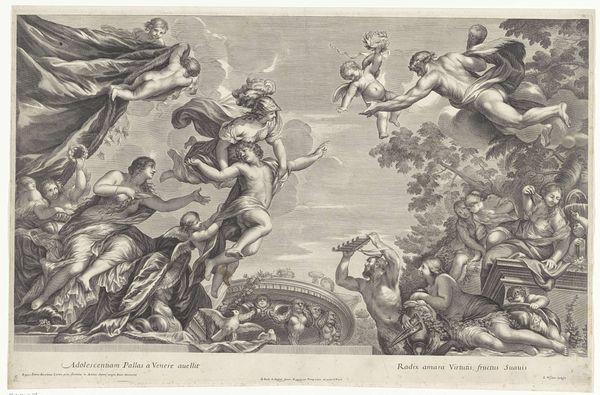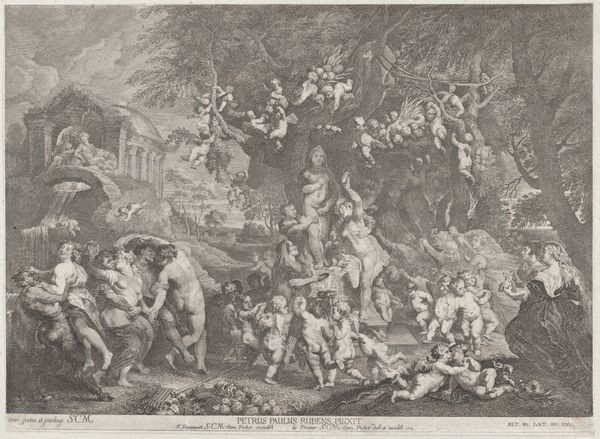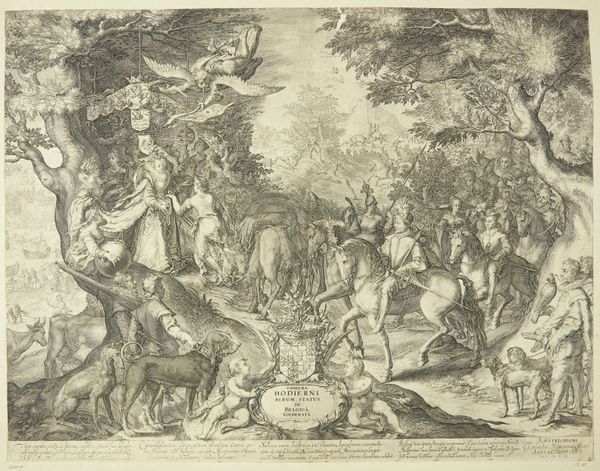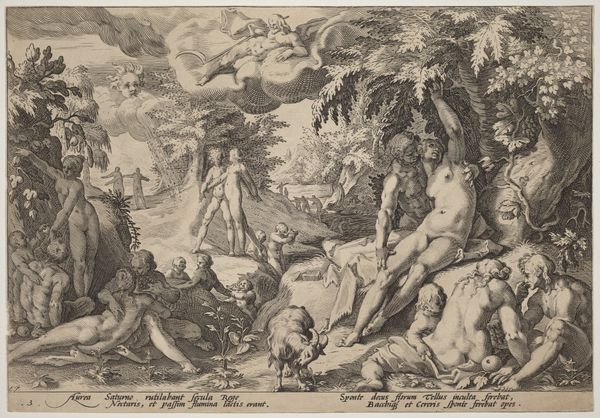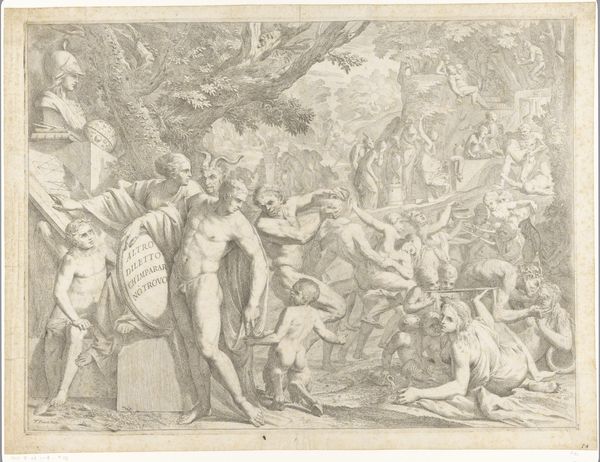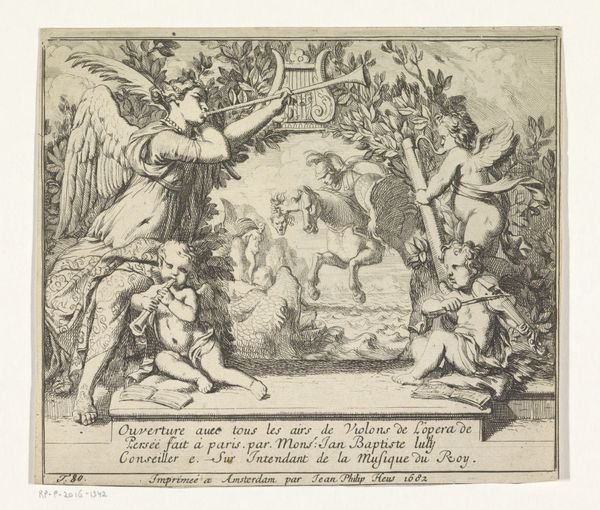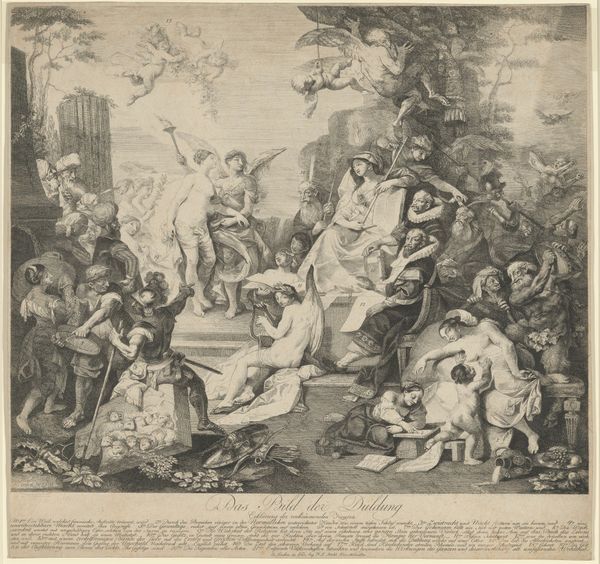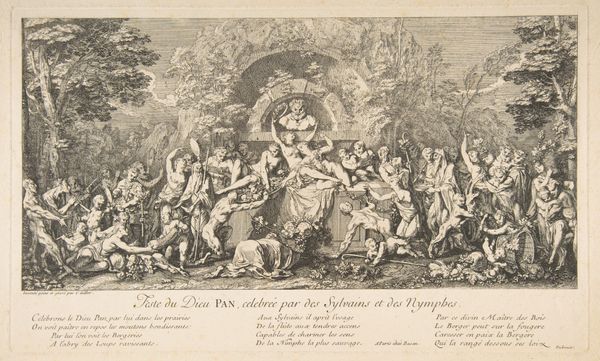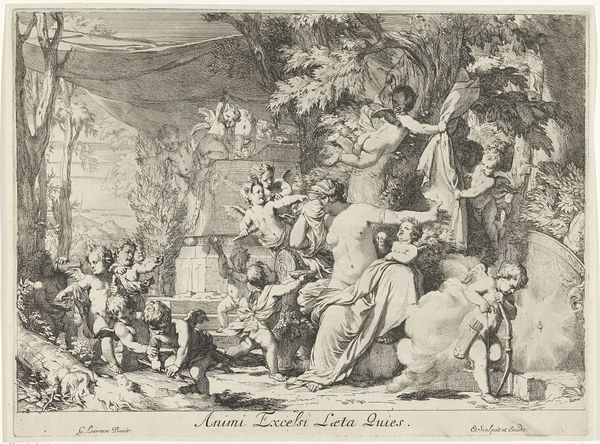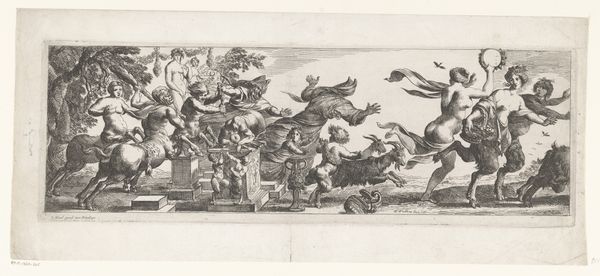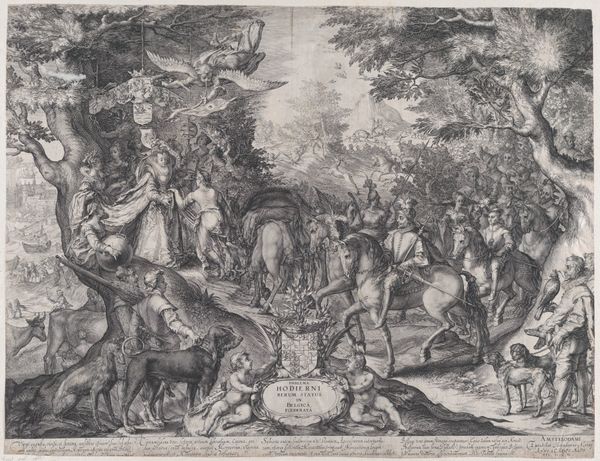
print, engraving
#
baroque
# print
#
landscape
#
figuration
#
pen-ink sketch
#
line
#
pen work
#
history-painting
#
engraving
Dimensions: height 169 mm, width 227 mm
Copyright: Rijks Museum: Open Domain
This print, "Roof van Proserpina," was made by Jean Lepautre in the 17th century, using etching and engraving techniques. The entire image is built from a network of lines incised into a metal plate, and then printed with ink on paper. Look closely, and you can see how the varying densities of line create different effects of light and shadow. Lepautre was part of a generation that transformed printmaking from a purely reproductive medium into a creative one. Prints like this one made art accessible to a wider public. Unlike painting or sculpture, prints could be produced in multiples, and sold at relatively low cost. This commercial aspect of printmaking meant that artists like Lepautre had to be skilled not only in technique, but also in marketing their work to a growing consumer base. Considering the labor involved in creating each plate, these prints reflect the rise of both skilled craftsmanship and wider distribution of art. They challenge our understanding of how art was created and consumed in early modern Europe.
Comments
No comments
Be the first to comment and join the conversation on the ultimate creative platform.
